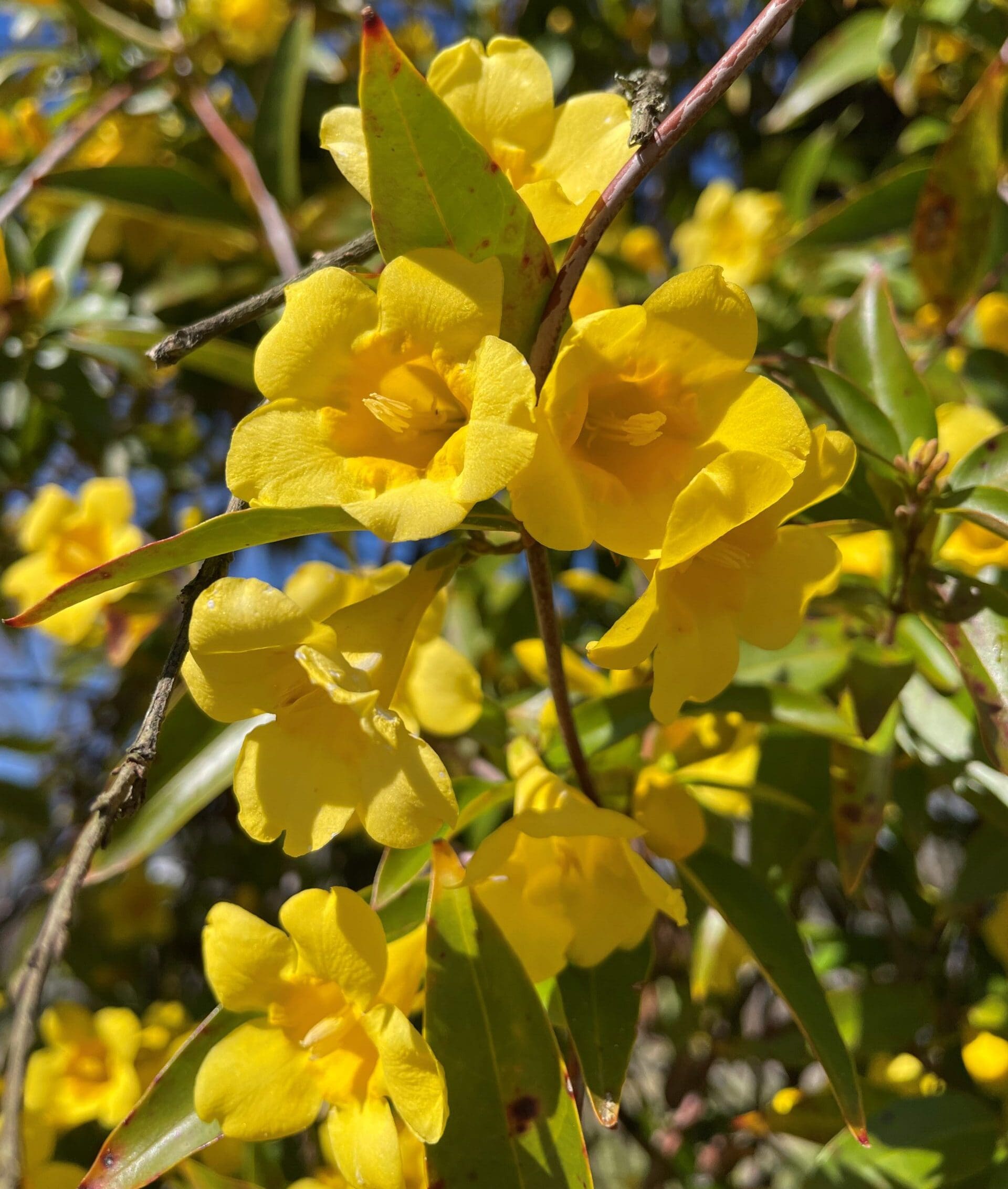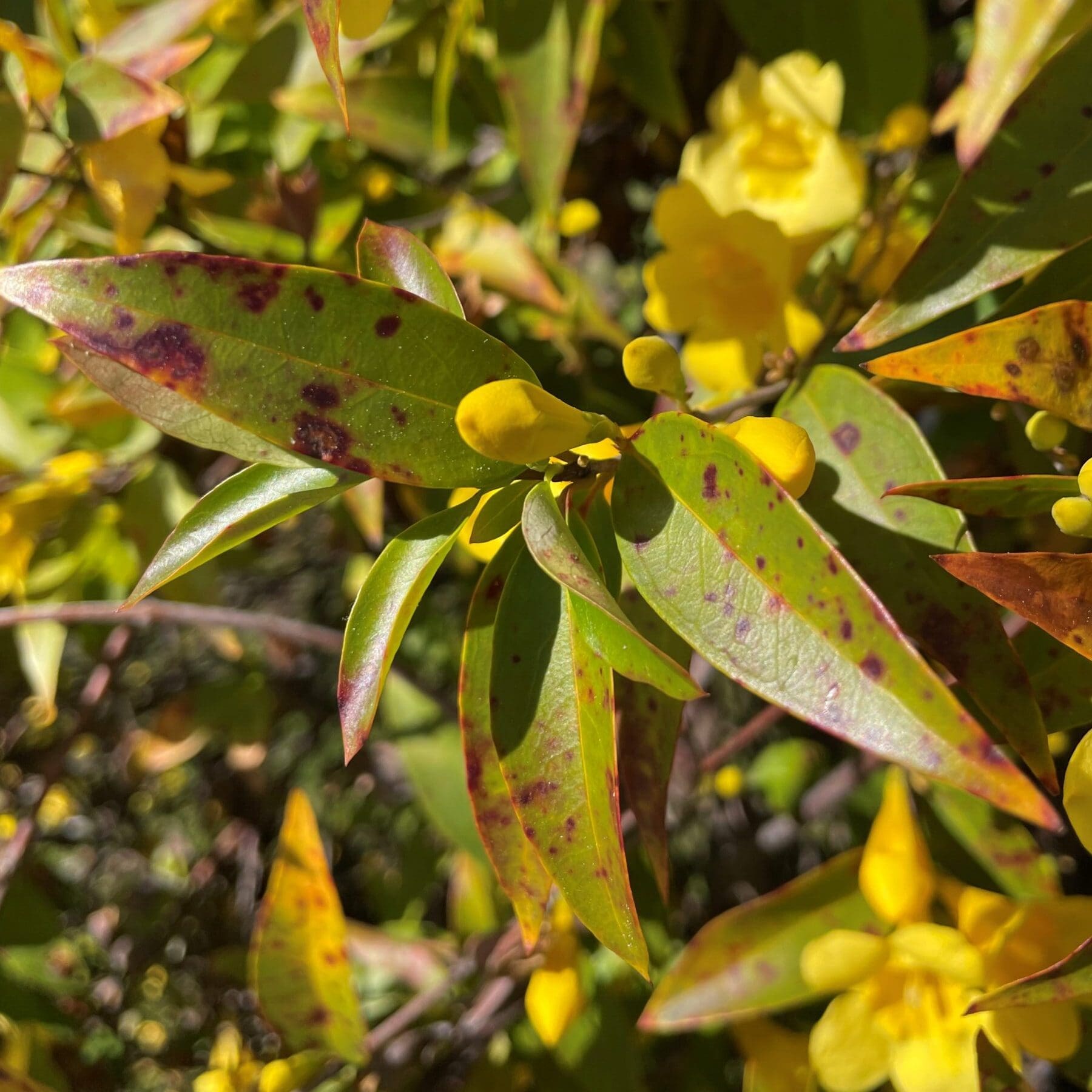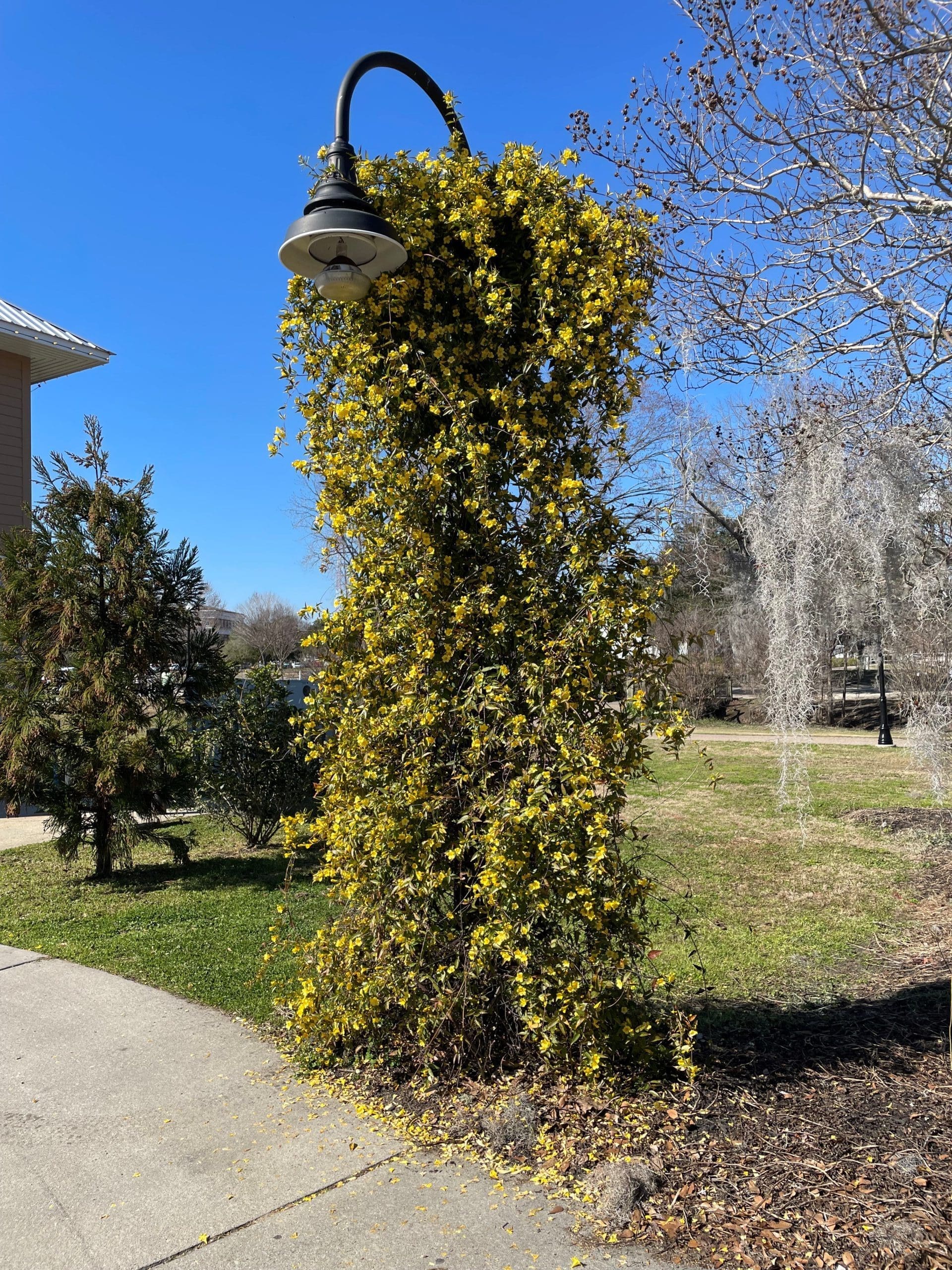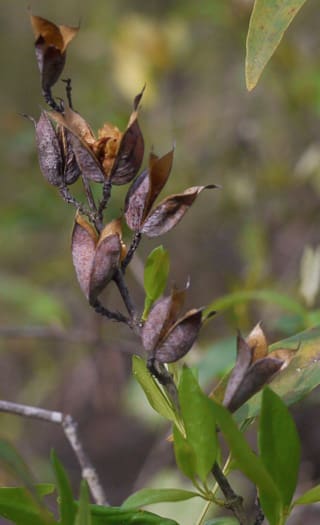Loganiaceae
Carolina jessamine
Gelsemium sempervirens
Synonyms
Bignonia sempervirens
Jeffersonia sempervirens
Other Common Names
yellow jessamine
Plant Type
Vine
Life Cycle
Perennial
Typical Size
12-20 ft. tall
Tolerant of
Deer, Drought, Occasional Flooding, Salt Exposure
Propagation
By seed, By cutting
Plant Propagation Notes
Collect the ripe, brownish capsules in the fall and allow to air dry for a few days before removing the seeds. Store seeds in a sealed, refrigerated container. May also be propagated from hardwood and semi-hardwood cuttings.
Plant Planting Notes
Carolina jessamine will grow best in moist, organically rich, well-drained soil with plenty of sun.
Wildlife Benefits
Nectar/pollen source for pollinating insects, Nectar source for hummingbirds
Leaves
Opposite light green leaves are 1-3 inches long, shiny, lanceolate, and entire.
Flowers
Trumpet-shaped, perfect flowers are radially symmetrical with 5 sepals, 5-lobed funnelform corolla, and 5 stamens.
Fruit
Thin, flattened capsules which are dehiscent appear in the fall.
Toxicity
All parts of the plant are toxic to humans and livestock if consumed. The sap can cause contact dermatitis in sensitive individuals.
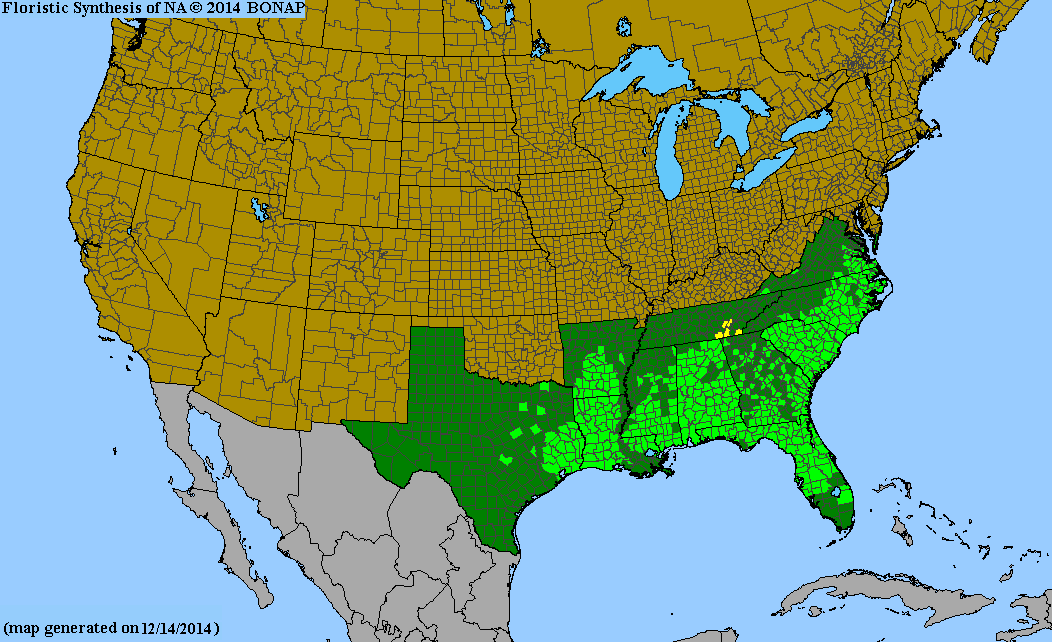
USDA Hardiness Zones
6, 7, 8, 9, 10
Light Exposure
Full Sun, Part Sun/Shade
Soil Moisture
Moist
Soil Drainage
Well-drained
Soil pH
Acidic (less than 6.0), Neutral (6.0-8.0), Basic (greater than 8.0)
Native in South Carolina?
Yes
Plant Native Habitat
Gelsemium sempervirens can be found in dry to wet thickets, woods, fence rows, or hammocks. In South Carolina, it is often seen scrambling up pine trees along road edges.
Global Conservation Status (NatureServe)
Secure (G5)
Federal Conservation Status (USFWS)
Not Listed
Distribution Notes
Within South Carolina, Carolina jessamine is common in the Coastal Plain, common in the Piedmont, and uncommon in the Mountains. It’s entire range stretches from Virginia, southeastern Tennesee, and Arkansas south to central peninsular Florida and eastern Texas.

